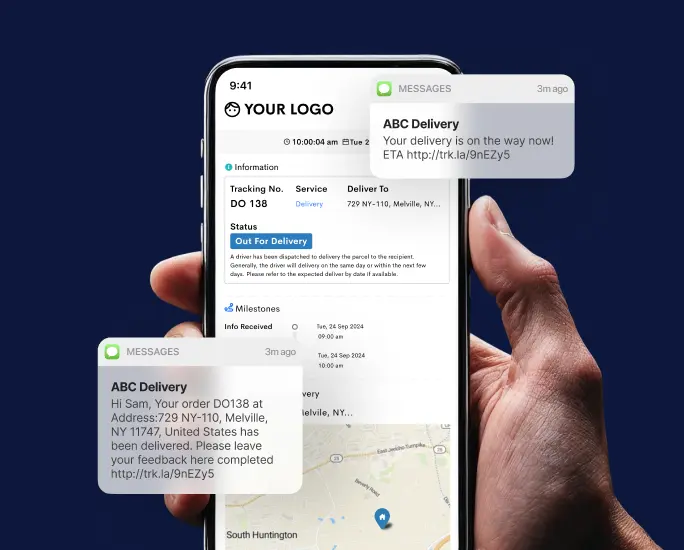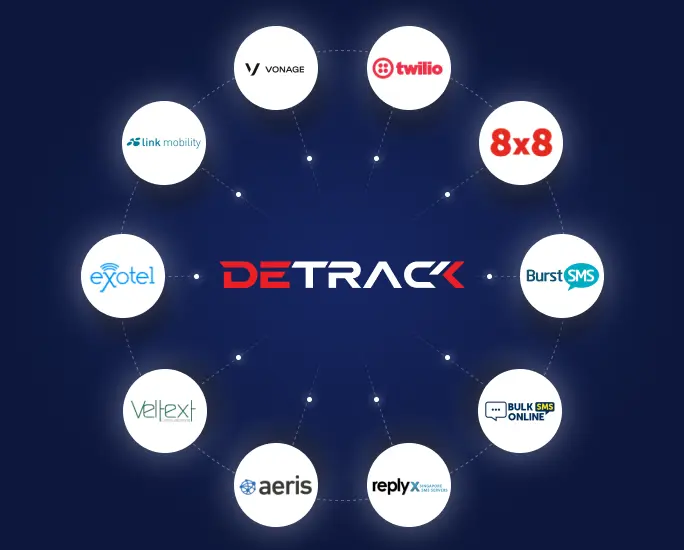Cloud technology is one of the most important advancements in business in the last decade. It has allowed businesses to store and share information more easily, saving time and money.
But how can cloud technology help with supply chain visibility?
There are three keys to supply chain visibility through a cloud: data sharing, communication tools, and reconfiguration capabilities. Let’s take a closer look at each of these.
What Is Supply Chain Visibility?
Supply chain visibility is tracking and monitoring supply chain activities, processes, and data in near-real time. This allows businesses to identify issues and bottlenecks, optimize operations, and improve performance.
There are many benefits of supply chain visibility, including:
- Improved customer satisfaction: By tracking orders and shipments, businesses can provide their customers with up-to-date information on the status of their orders. This helps to improve customer satisfaction and loyalty.
- Reduced inventory costs: By having visibility into the supply chain, businesses can more accurately forecast demand and plan their inventory accordingly. This helps to reduce unnecessary stock levels and the associated costs.
- Improved supplier performance: By monitoring supplier performance, businesses can identify issues early and take corrective action to improve supplier performance. This helps to reduce disruptions and ensure a smooth supply chain operation.
- Reduced risk: By tracking shipments and monitoring inventory levels, businesses can reduce the risk of stockouts and other disruptions. This helps to protect the company from potential losses.
How Can You Achieve Supply Chain Visibility?
There are several ways to achieve supply chain visibility. The most important step is to choose the right technology solution for your business.
Many different delivery management software and applications are available, so selecting one that will meet your specific needs is essential. Once you have the right technology, you can begin tracking and monitoring your supply chain data.
Another key to achieving supply chain visibility is establishing clear communication channels between all of the different parties involved, including suppliers, manufacturers, logistics providers, and customers.
You can quickly identify and resolve any issues by having an open line of communication.
Achieving supply chain visibility requires a commitment from all parties involved. But the benefits are well worth the effort. Having complete visibility into your supply chain can improve efficiency, reduce costs, and improve customer satisfaction.
Supply Chain Visibility Goals
Here are some of the goals of supply chain visibility:
Mitigate Disruptions
The goal of supply chain visibility is to mitigate disruptions. By understanding where your products are at all times, you can avoid potential delays and ensure that your customers receive their orders on time.
In the event of a disruption, such as a natural disaster or a supplier issue, visibility allows you to identify the problem and take steps to resolve it quickly.
Improve Efficiency
In addition to mitigating disruptions, supply chain visibility can also help you improve the efficiency of your operations.
By understanding where your products are and how they are moving through your supply chain, you can identify bottlenecks and optimize your processes. This information can also be used to forecast demand and plan production levels accordingly.
Boost Agility
Supply chain visibility can also boost your agility. In today’s fast-paced business environment, responding quickly to changes in demand is critical. With visibility, you can see when a customer’s order is going to be delayed and take steps to expedite it.
You can also use visibility data to adjust your production levels in real-time, ensuring that you always have the right products in stock.
Improve Customer Satisfaction
Finally, supply chain visibility can help you improve customer satisfaction. By providing your customers with up-to-date information on the status of their orders, you can keep them informed and reduce the likelihood of them experiencing delays.
This transparency can also build trust and loyalty, making your customers more likely to do business with you in the future.
Types Of Supply Chain Visibility
Below are the common types of supply chain visibility:
Auditing Records
Accurate and up-to-date records are critical for any business, but they are especially important in the supply chain. Inaccurate or outdated records can disrupt the flow of goods, ultimately affecting the bottom line. That’s why auditing records is a key part of supply chain visibility.
There are two main types of audits that can be performed on supply chain records:
- Operational audits: These audits focus on the supply chain’s day-to-day operations and ensure that all processes are being followed correctly. This includes verifying that orders are being fulfilled on time and that goods are being properly tracked throughout the supply chain.
- Financial audits: As the name implies, financial audits focus on the financial aspects of the supply chain. This includes verifying that invoices are accurate and that payments are being made on time. Financial audits can also help identify areas where cost savings could be achieved.
Auditing records is an important part of supply chain visibility because it helps to ensure that the supply chain is running smoothly and efficiently. By identifying and correcting errors, audits can help to improve the overall performance of the supply chain.
Rates Visibility
Rate visibility is the ability to see, track, and compare the rates charged for goods and services throughout the supply chain. This information can be used to negotiate better rates with suppliers, identify areas where cost savings could be achieved, and generally make more informed decisions about how the supply chain is run.
Rates visibility is typically achieved through the use of a rate management system. This is a software application that stores and tracks rate information. The system can be used to generate reports detailing the rates charged for specific goods or services, as well as comparisons between different suppliers.
A rate management system can be a valuable tool for achieving supply chain visibility because it provides insight into the cost of goods and services. This information can be used to make informed decisions about where to source goods and services, and how to negotiate better rates with suppliers.
Supply Chain Activities
Many different activities take place within a supply chain. Some are more visible than others, but all play a role in its overall functioning.
The following are some examples of activities that take place within a supply chain:
- Order management is the process of taking customer orders and ensuring that they are fulfilled correctly. This includes taking customer phone calls, processing customer orders, and tracking the progress of those orders through the supply chain.
- Inventory management is the process of tracking inventory levels throughout the supply chain. This includes ordering new inventory from suppliers, storing inventory, and distributing inventory to customers.
- Transportation management: This is the process of managing the transportation of goods throughout the supply chain. This includes things like scheduling shipments, routing shipments, and tracking the progress of shipments.
- Warehouse management is the process of managing the storage and distribution of goods in a warehouse. This includes receiving shipments, storing goods, picking orders, and shipping orders.
- Supplier management is the process of managing relationships with suppliers. This includes negotiating contracts, placing orders, and tracking payments.
Benefits Of Supply Chain Visibility Through A Cloud
Below are the 3 key points of the benefits the cloud can bring companies in their supply chain and logistics operations:
Real-time collaboration
Moving wholesale distribution processes to the cloud allows data to flow seamlessly, improving communications between wholesalers and their customers.
Now, everyone can work in sync with the same data, audit trails, and real-time accuracy at every stage. Having a common platform will ensure a smooth flow of communications and a high level of accuracy.
Single data set
Rather than data stored on multiple platforms, applications, or spreadsheets, all data is now consolidated from a single source. This saves time, effort, and money in managing and processing data from multiple sources. The cloud enables wholesale distributors to build and manage a single data set on trading partner performance.
In fact, from a Detrack point of view, some of our users are using Detrack as a platform to consolidate all the delivery data and share it with their customers and vendors (often 4PLs).
By doing so, the level of communication between stakeholders has improved bringing about a significant increase in the last mile delivery efficiency and cost savings.
Business and IT agility
From an IT perspective, using a validated prebuilt application from a software vendor on the cloud is faster and far less costly than on-premise solutions (which often come with hefty additional costs, including maintenance, updating, training, setup, etc.).
Choosing a cloud solution that meets your needs means more resources can be channeled into building the business rather than managing IT.
Gain Supply Chain Visibility with our Cloud-based App
Companies that adopt supply chain visibility reap substantial financial rewards and trade faster, more efficiently, and with fewer risks. Improved data accuracy reduces the number of errors in inventory.
As a result, companies avoid costly mistakes, ship products on time, and improve customer satisfaction rates. In addition to reducing risk, adopting supply chain visibility also enables companies to take advantage of new opportunities as they arise.
By tracking goods throughout the supply chain, companies can quickly adapt to changes in consumer demand or unexpected events that might impact production schedules. When you have real-time information about your supply chain at your fingertips, it’s easier than ever before to make decisions that lead to improved efficiency and profitability.
To see how Detrack can help you gain better visibility and control over your supply chain, create an account and get instant access with our limited trial.










